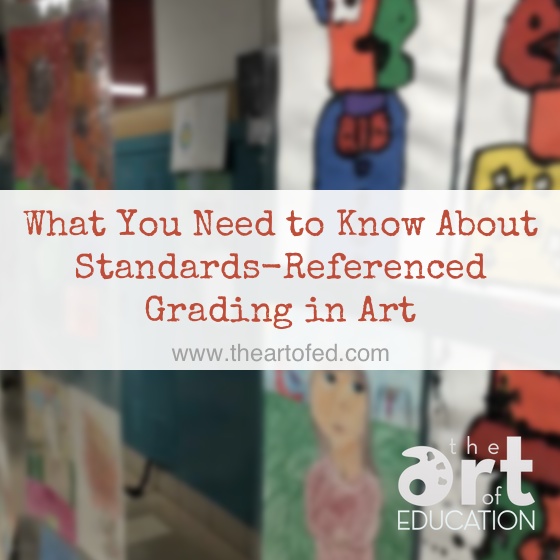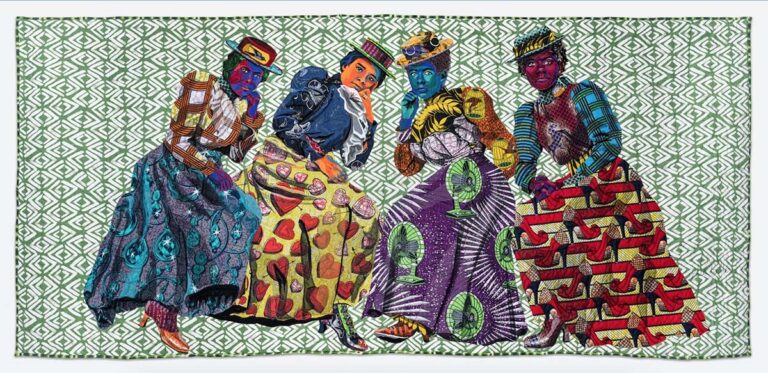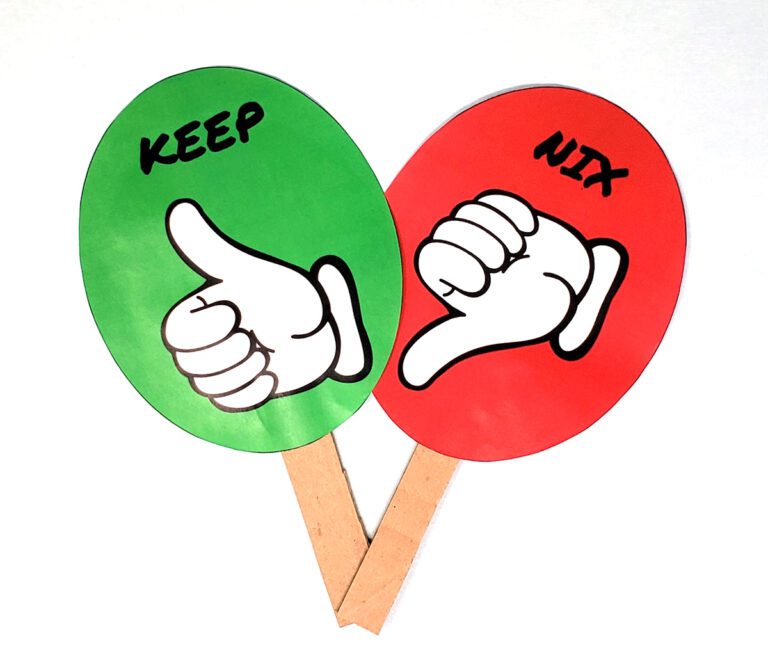If you’ve heard anything about grading in any subject lately, it is probably all about standards-referenced grading. Today we’re specifically talking about standards-referenced grading in the art room. First, a little background.
In a standards-referenced system, a student’s status is reported (or referenced) relative to the performance standard for each area of knowledge and skill on the report card. For instance, in the art classroom, a learning standard might be the use of elements and principles to convey an idea or meaning. A student’s report card reflects his or her progress towards this standard. Students don’t just get one aggregated grade, but a series of scores on multiple standards. A little different, huh? Today I’ve put together 4 key things you need to know about standards-referenced grading in the art room.

1. Behavior and effort are reported SEPARATELY from academic standards.
Trying hard and being a good citizen are critical. So critical, in fact, that they should get their own space on the report card. Likewise, academic content should have its own space as well. No more saying, “You didn’t get it, but I’ll give you a B because you tried so hard.” That certainly doesn’t set a student up for success at the next level.
2. Homework is not part of the mix.
Homework is practice. It’s just the same as orchestra students taking their instruments home to prepare for class and concerts. Homework, wisely chosen homework, can be assigned, but it is not part of a student’s grade. Any homework you assign should prepare students for the work you do in class with them.
3. Standard-referenced grading moves us away from the subjective grading of art products.
In a standards-referenced grading system, we move closer to evaluating the learning students do as they work towards mastery of the most vital art skills. Ever have a piece of student work turn out terribly, even though the student provided plenty of evidence that he or she understood the skill? The beauty of this system is that students can provide evidence in any number of ways over as much time as needed (within reason).
4. Most importantly, grades mean something.
Grades go beyond a system that can be gamed and manipulated by both students and teachers to a method of communication around student progress and next steps.
Interested in learning more about standards-referenced grading for your class? Start with this article on formative assessment (at the heart of SRG), then move over to Ed Leadership, The Robert Marzano Lab, and Rick Wormeli’s site.
Do you use a standards-referenced grading system? How does it work for you?
What questions do you still have about this way of grading?
Magazine articles and podcasts are opinions of professional education contributors and do not necessarily represent the position of the Art of Education University (AOEU) or its academic offerings. Contributors use terms in the way they are most often talked about in the scope of their educational experiences.




